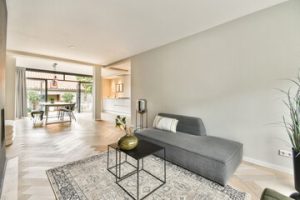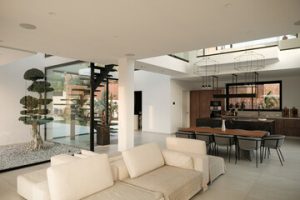Interior design plays a vital role in creating a home that reflects your personality, suits your lifestyle, and offers comfort and beauty. Whether you’re furnishing a new home or updating an existing one, the right design approach can make every space more inviting and functional. Here are some expert-backed interior design ideas to help you transform your house into a stylish and harmonious living environment.
1. Start with a Clear Design Plan
Before diving into décor choices, create a plan that defines your style preferences, color palette, and budget. Decide whether you prefer a modern, minimalist look or a cozy, traditional vibe. Having a clear vision ensures consistency throughout your home and helps you make smart decisions when selecting furniture, accessories, and materials.
2. Choose a Neutral Base with Accents
Neutral tones such as white, beige, gray, and soft pastels provide a versatile foundation for any room. These shades create a sense of openness and allow decorative accents to stand out. To add personality, incorporate bold accent colors through throw pillows, rugs, curtains, or artwork. This approach makes it easy to refresh the space without major changes.

3. Maximize Natural Light
Natural light can make any room feel more spacious and inviting. Use sheer curtains or blinds that allow sunlight to filter through while maintaining privacy. Position mirrors opposite windows to reflect light and enhance brightness. Incorporating glass doors or skylights can further increase daylight exposure in living spaces.
4. Invest in Multi-Functional Furniture
Practical furniture is essential for modern homes, especially in smaller spaces. Opt for pieces that serve multiple purposes, such as storage ottomans, sofa beds, or extendable dining tables. Built-in shelves and wall-mounted desks can also help maximize space without sacrificing style.
5. Layer Lighting for Warmth and Ambiance
A well-lit room requires more than a single overhead fixture. Use a combination of ambient, task, and accent lighting to create depth and functionality. Pendant lights, floor lamps, and wall sconces can add character and highlight architectural features. Dimmable lights allow you to adjust brightness based on mood and activity.
6. Incorporate Natural Elements
Bringing elements of nature indoors adds warmth and balance to interior spaces. Wood furniture, stone accents, and natural fabrics like linen or cotton create an organic feel. Indoor plants not only enhance visual appeal but also improve air quality and create a calming atmosphere.
7. Create a Focal Point in Each Room
Every room should have a central element that draws attention, such as a statement wall, an elegant fireplace, or a piece of artwork. A well-chosen focal point adds personality and anchors the overall design. Complement this feature with coordinating colors and accessories to maintain harmony.
8. Use Rugs to Define Spaces
Area rugs are a simple yet effective way to define zones within open floor plans. Choose rugs that complement your color scheme and furniture style. For smaller rooms, lighter tones and simple patterns create the illusion of more space, while bold designs can add drama to larger areas.

9. Declutter for a Clean, Organized Look
Minimalism doesn’t mean empty spaces—it means purposeful design. Keep only what you need and love, and find smart storage solutions for everything else. Built-in cabinets, under-bed storage, and decorative baskets help maintain a clutter-free environment, making your interiors feel more polished and serene.
10. Add Personal Touches
Your home should reflect your personality and experiences. Display meaningful artwork, family photos, or travel souvenirs to make the space uniquely yours. Personal touches give warmth and character to your interiors, turning a house into a true home.